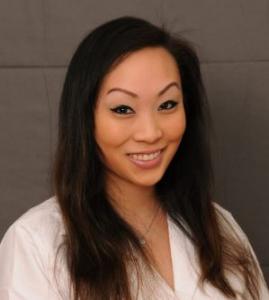Common Signs & Symptoms of Mycosis Fungoides
Dermatology PA-C Jennifer Wong with Advanced Dermatology PC on How to Identify Mycosis Fungoides.
If you notice a lesion or experience symptoms, it’s important to see a dermatologist to confirm or rule out mycosis fungoides. ”
ASTORIA, NY, UNITED STATES, September 21, 2022 /EINPresswire.com/ -- Some skin conditions are not as they appear. One of them is mycosis fungoides, a common cancer that “imitates” various skin conditions, says Jennifer Wong, PA-C with Advanced Dermatology PC.— Jennifer Wong, PA-C
Mycosis Fungoides (MF) is a type of non-Hodgkin’s lymphoma that affects the skin. Most people catch it in the early stages. But in a small percentage of cases, the disease progresses and can be fatal. “Because outcomes can be so different, early diagnosis and treatment are crucial,” notes Wong.
The problem is, MF can look different for different people, and it can look like a lot of other things, according to Wong. In fact, in an article published in a 2019 issue of Clinics in Dermatology, researchers have coined MF “the great imitator” due to the fact that it’s often mistaken for several, less serious skin conditions.
“This can lead to missed or delayed diagnosis,” explains Wong, “which can affect a patient’s prognosis. It’s important that physicians are aware of the various ways MF can present so patients can get proper diagnosis and treatment.”
What is mycosis fungoides?
Mycosis fungoides is a cutaneous T-cell lymphoma. It occurs in T-cells (white blood cells) in the skin. The T cells become malignant (cancerous), causing different types of skin lesions, including tumors. The name mycosis fungoides refers to the tumors which resemble mushrooms, a type of fungus.
Mycosis fungoides can affect anyone, but it’s most common in adults over age 50. Men are twice as likely as women to develop MF.
Signs & Stages
Wong explains there are several stages, or phases, of mycosis fungoides. “People may progress slowly through the stages, although not all people will go through all stages,” she explains.
These different phases are defined by the lesions that form on the skin. They can show up anywhere on the body, but they usually appear on areas that aren’t exposed to the sun, like your back, chest, belly, and buttocks.
Premycotic – For many people, the first sign of MF is a scaly, red rash. It may last for months or years. “Typically there are no other symptoms, so it’s hard to diagnose MF in this stage,” says Wong.
Patch – The next phase is when a patch may develop. Patches are usually flat and can be smooth or scaly. You may also have a thin, red rash.
Plaque – A plaque is a raised lesion on the skin that’s usually reddish, purplish, or brownish in color. It can appear as small, raised bumps or hard lesions. It’s also usually scaly. “It can be easy to mistake plaques and patches for less common skin conditions, like eczema, psoriasis or “non-specific” dermatitis,” notes Wong.
Tumor - In this phase of MF, tumors or thick, deep nodules form. They are usually raised, and they may develop ulcers or open sores. This sometimes leads to infection.
People with MF may have one or more types of lesions at the same time. “Most people have either patches or plaques, or both,” notes Wong, “but not everyone with patches or plaques will develop tumors.”
Common Symptoms
Similar to many other skin conditions, itching is one of the most common symptoms of MF. More than 80 percent of people with MF experience itching at some point. Other common symptoms include:
• redness
• irritation
• scaly or flaky skin
Diagnosis & Treatment
If you notice a lesion or experience symptoms, it’s important to see a dermatologist to confirm or rule out mycosis fungoides. Your dermatologist may recommend additional tests, such as a skin biopsy or lymph node biopsy, CT or PET scans, or blood tests.
There are many different types of treatments for MF, and new types are being tested in clinical trials, such as immune checkpoint inhibitor therapy. Typical treatment depends on the stage of MF, but may include:
• photodynamic therapy
• radiation therapy
• chemotherapy
• other drug therapy
• immunotherapy
• targeted therapy
• high-dose chemotherapy and radiation therapy with stem cell transplant
Although there is no known cure for mycosis fungoides, people can live symptom-free for many years. Wong reiterates, “Being able to recognize the signs, and getting early diagnosis and treatment, can make all the difference.”
Jennifer Wong, PA-C with Advanced Dermatology, P.C., is a certified Physician Assistant with comprehensive experience in medical and cosmetic dermatology for all ages.
Advanced Dermatology P.C. and the Center for Laser and Cosmetic Surgery has over 50 offices in NY, NJ, CT and PA and is one of the leading dermatology centers in the nation, offering highly experienced physicians in the fields of cosmetic and laser dermatology, as well as plastic surgery and state-of-the-art medical technologies. www.advanceddermatologypc.com
Melissa Chefec
MCPR, LLC
+1 203-968-6625
email us here
Legal Disclaimer:
EIN Presswire provides this news content "as is" without warranty of any kind. We do not accept any responsibility or liability for the accuracy, content, images, videos, licenses, completeness, legality, or reliability of the information contained in this article. If you have any complaints or copyright issues related to this article, kindly contact the author above.

